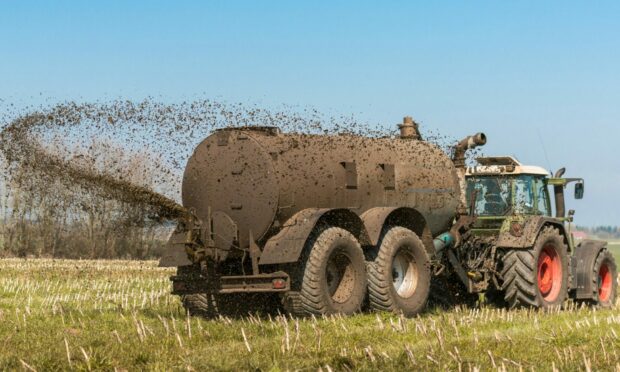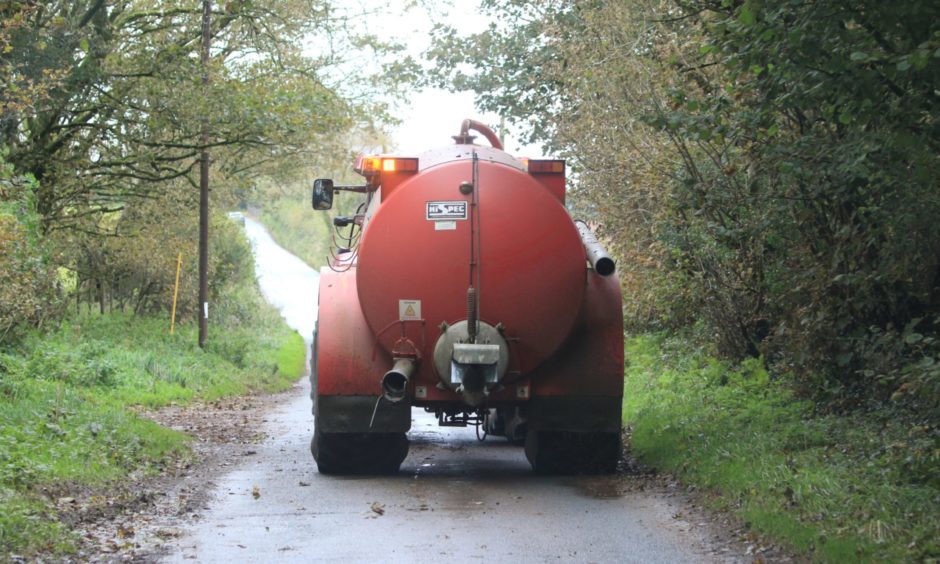Changes to the way slurry and digestate is stored and spread are being introduced by the Scottish Government, but farmers will get up to five years to comply with regulations.
The amendments to the regulations include improving controls on storage to reduce leakage and more targeted spreading to reduce emissions and maximise nutrient benefits from the estimated 6.35 million tons (1.67 billion gallons) of slurry produced in Scotland every year.
The changes, which follow a 12-week public consultation and engagement with the farmers’ union, will be phased in.
Environment and Land Reform Minister Mairi McAllan said: “We understand that farms will not be able to introduce these changes overnight.
Engagement
“We have engaged with and listened to the concerns of farmers and where possible have made alterations that would allow us to meet the aims of the regulations while reducing the impact on businesses.”
NFU Scotland previously warned new rules could drive farmers out of business, and after the announcement of the changes they said their priority would be to ensure all farmers and crofters are aware of the changes
Key elements of the regulatory changes include the phasing out of broadcast spreading of slurries by splash plates and the introduction of low-emission, precision spreading equipment.
Slurry stores built prior to 1991 can be retained, providing they are fit for purpose.
However if a pre-1991 store is to be ‘reconstructed or enlarged’ to meet storage requirements then it will no longer be exempt and will then have to comply with the British Standards.
All farms will be required to have adequate slurry storage which amounts to 22 weeks for those keeping cattle and 26 weeks for pigs.
NFUS environmental resources policy manager, Sarah Cowie said: “When first published, the proposals drew a great deal of consternation and worry that significant capital investment for facilities and upgrades would be required to comply.
“A clear omission from the Scottish Government announcement today is what funding will be available to assist the industry to make necessary changes.
“NFUS is clear that where significant capital investment is required by farm businesses, adequate, non-competitive funding should be provided to allow businesses to adapt and invest in upgrades and equipment in order to comply with the regulations.”
The Water Environment (Controlled Activities)(Scotland) Amendment Regulations 2021 will come into force from January 1, 2022.
The changes include:
- An obligation for farmers to comply with the Risk he Risk Assessment for Manures and Slurries (RAMS) – a tool which helps plan applications of organic materials for good agricultural practice and reduce pollution risks.
- A phasing out of broadcast spreading of slurry by splash plates, and the introduction of low-emission, precision spreading equipment over a five-year period.
- Silage bales or bulk bags must not be stored, opened, or unwrapped within 10 metres of any surface water.
- A silo, slurry storage system or liquid digestate storage system constructed on or after 1 January 2022 must not be situated within 10m of any surface water or opening into a surface water drain which silage effluent/slurry/liquid digestate could enter if it were to escape.
- A silo, slurry storage system or liquid digestate storage system must meet “fit for purpose” standards if constructed pre-1991. If constructed on or after 1991, or is substantially reconstructed or enlarged on or after the coming into force date, it must meet additional British construction standards.
- New, substantially reconstructed or enlarged silos/slurry stores/liquid digestate stores from 1 January 2022 must have a life expectancy of at least 20 years, with proper maintenance. SEPA must also be notified prior to commencing the works.
- The minimum capacity of the slurry storage system and/or slurry bags must be sufficient to store the total quantity of slurry likely to be produced in 26 weeks by housed pigs, or 22 weeks by housed cattle. The total quantity of slurry is to be calculated with the formula set out in the Action Programme for Nitrate
- Vulnerable Zones (Scotland) Regulations 2008(a).
Where liquid digestate is produced on the farm and where liquid digestate is imported onto a farm, there must be sufficient storage capacity on the farm during periods when application is not authorised under activity 18 of the regulations or would not comply with the requirements of the Action Programme for Nitrate Vulnerable Zones (Scotland) Regulations 2008(b).

